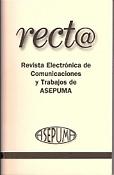New indexes for measuring electoral disproportionality
DOI:
https://doi.org/10.24310/recta.21.2.2020.19892Palabras clave:
Proportional representation, disproportionality indexes, Loosemore-Hanby index, Jefferson method, Webster methodResumen
The number of representatives obtained by each political party in an electoral process must be a whole number. So, the percentage of votes for each party usually differs from the corresponding percentage of seats, forcing a certain unavoidable disproportionality. On the other hand, different elements of the electoral system (constituencies, thresholds, etc.) may produce some avoidable disproportionality. Those indexes traditionally used to analyse disproportionality take into account an unreachable exact proportionality as a reference. Instead, our more realistic approach quantifies distortions from a specific allotment, namely the seat distribution obtained when applying a proportional method to the total votes (that is, as if it were a unique constituency, without electoral thresholds or incentives to the winning party). Hence, we measure the avoidable disproportionality associated with such method. Unlike traditional indexes, we propose indexes associated with proportional allotment methods that can be zero in real situations. They are simple to calculate and allow us to decipher the number of seats assigned beyond the inevitable disproportionality which arises from the constraint of whole numbers. We are particularly interested in the indexes associated with Jefferson and Webster methods, which are compared to Gallagher, Loosemore-Hanby and SainteLaguë indexes for the results of 55 elections held in several countries.
Descargas
Publicación Facts
Perfil de revisores N/D
Información adicional autores
Indexado: {$indexList}
-
Indexado en
- Sociedad Académica/Grupo
- N/D
- Editora:
- UMA Editorial. Universidad de Málaga
Descargas
Publicado
Cómo citar
Número
Sección
Licencia

Esta obra está bajo una licencia internacional Creative Commons Atribución-NoComercial 4.0.









